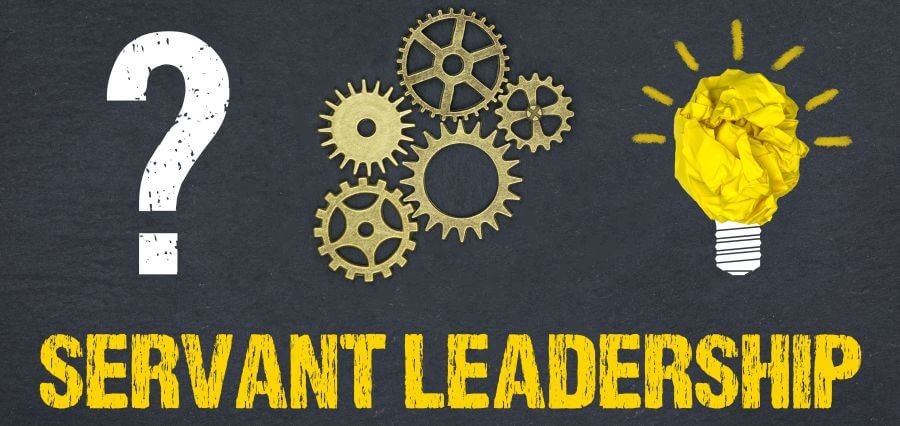When people think of leadership, they often picture strong characters who take bold decisions, give direct orders, and require others to obey without questioning. But in a world where organizations are becoming more people-centric, one more concept is rapidly getting the spotlight—servant leadership. The servant leadership definition, just to name it first, depicts the leader-impact way of acting that reverses the traditional leadership pyramid.
The emphasis is no longer on the leader’s power and authority but on serving the people who are being led. This one simple yet profound change trickles down to how teams engage, grow, and win together.
The core of servant leadership, however, is not lessened despite the absence of authority but rather actualized in stewardship. It embodies a philosophy that the best leaders are the ones who put the needs of their teams ahead of their own ambitions. The service is more prominent than control, and collaboration rather than command and empowerment rather than dominance are the features highlighted in the definition. The leaders who adopt this belief are not losing their strength in humility, but rather they become stronger because of the trust and loyalty they garner.
The Origin of the Servant Leadership Definition
The idea was known to the public by Robert K. Greenleaf in the 1970s, but it was already implied in many ancient philosophies and even religious teachings. Greenleaf considered servant leadership to be a model where the leader’s main function is to serve. In contrast to traditional leadership forms, which are basically based on the desire for power, prestige, or personal achievement, the servant leadership model is designed to lift others up first. The very servant leadership definition fabricates the idea that a leader is greatened through the act of not commanding followers but by providing them with guidance.
This philosophy goes against the concept that strength is the same as control. Greenleaf, by redefining leadership as service, allowed the entry of a new trend that puts people at the center through empathy, active listening, and the practice of caring for people.
What is a servant leader in modern organizations?
If you really want to know what a servant leader is, then picture managers, executives, or even team leads who put people first and profits second, though they do not fail in achieving the company’s goals. These leaders are instructors rather than supervisors and motivators rather than taskmasters. They role-play with their workers; thus, by sympathizing with them and knowing their challenges, they become active to eliminate the barriers.
To illustrate, in a servant-led workplace, a manager may be more interested in understanding an employee’s career goals and getting the employee growth opportunities rather than just measuring the employee’s productivity. There is no doubt that servant leaders are genuinely concerned about the holistic development of the members of their team. They are aware that an enabled and enthusiastic workforce is the first step towards achieving better results.
Why the Servant Leadership Definition Matters Today
The servant leadership definition in today’s changing corporate environment, where employee wellness, engagement, and mental health have become essential, gives a roadmap to organizations that are healthy. Employees are no longer contented by a mere paycheck; rather, they demand purpose, a sense of belonging, and respect. Servant leaders nurture these principles by engaging employees as complete human beings instead of managing them like resources.
Moreover, organizations that adopt servant leadership will likely benefit from the reduced turnover of employees, better collaboration, and increased innovation. Valued employees will be more proactive, express their innovative thoughts, and remain loyal to the company. Hence, servant leadership is not only a humanistic idea but also a corporate competitive weapon.
The Core Principles Behind Servant Leadership
Despite the difference in expression of the servant leadership definition, certain principles are common to all of them. Empathy, good listening skills, humility, and a sense of responsibility are the characteristics of servant leaders. They exercise stewardship by considering themselves as the caretakers of people and resources rather than the owners. Most importantly, they concentrate on development—supporting individuals to reach their highest potential.
Compared to traditional top-down approaches, leadership by the servant leader is about facilitation and not control. They do not dictate answers but ask questions, they do not use but nurture, and they seek to gain the confidence of their followers in the long run rather than take advantage of them for quick results. Such virtues make them very efficient in places where creativity, teamwork, and flexibility are important.
The Servant Leadership Definition in Action
Theory holds great potential; nevertheless, the truth of a servant’s leadership is in the practice. Look at companies that put employees first, where the leaders always show genuineness and empathy. These organizations frequently have high staff morale and customer satisfaction which, in turn, leads to even more business. The reason for this lies in the philosophy extending beyond internal teams and affecting how organizations relate to clients, partners, and the community.
Let us consider the example of the environment that focuses on customer service. A servant leader does not only secure the necessary office resources but also makes sure the staff feels truly valued. So, the employees become the caretakers and continue the cycle with customers. The ripple effect of servant leadership creates positive outcomes far beyond the office walls.
Why You Should Redefine Leadership for Yourself
Thinking about the servant leadership definition is definitely not just an academic exercise. It poses a question about different leadership in schools, companies, or communities. Anyone not only in the professional world can be a servant leader but also out of it. Parents, teachers, and volunteers all display this mindset when they prioritize the development and joy of others over their own.
What a servant leader is is not only a subject for boardroom discussions or corporate manuals. It involves how we choose to treat others every single time—choices that are based on kindness, honesty, and service. By reconsidering leadership, we can all be agents of good change.
Final Thoughts on the Servant Leadership Definition
The clearer the impact of the servant leadership definition, the more you think about it. Leadership may not necessarily be about titles, command, or overpowering others. The best leaders, in fact, are those who not only inspire and empower others but also craft a community where everyone can grow. By giving service first priority over personal gain, the servant leaders build trust, loyalty, and innovation cultures that cannot be established by intimidation or fear.
The leaders of the future who will not only be the boldest or the most ambitious, but those working with integrity and humility will be the ones that organizations look out for. The world is starting to realize that servant leadership is not a soft option—it is a smart one, thus making way for long-term success and true human connectivity.
Read Also : Recognizing the Role and Contributions of Digital Finance Innovators in Advancing the Finance Sector






